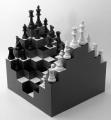The Army will replace its Cold War marksmanship strategy this summer with one that has basic trainees shooting more rounds, fixing jams and changing magazines — key skills all soldiers need in today’s combat.
“What we’ve learned through eight years of war is that’s now how our soldiers are having to shoot in combat,” Brig. Gen. Richard C. Longo, director of training for the Army’s deputy chief of staff, G-3/5/7, told Army Times. He described the current program, which is geared toward passing a single, live-fire test, as a “very sterile environment and a very predictable marksmanship qualification process.”
Initial Military Training Marksmanship, a program that draws lessons from the war zone, will become the Army standard for teaching new soldiers how to shoot in all five initial entry training centers beginning July 1.








 We're "learning" this???
We're "learning" this???




Bookmarks